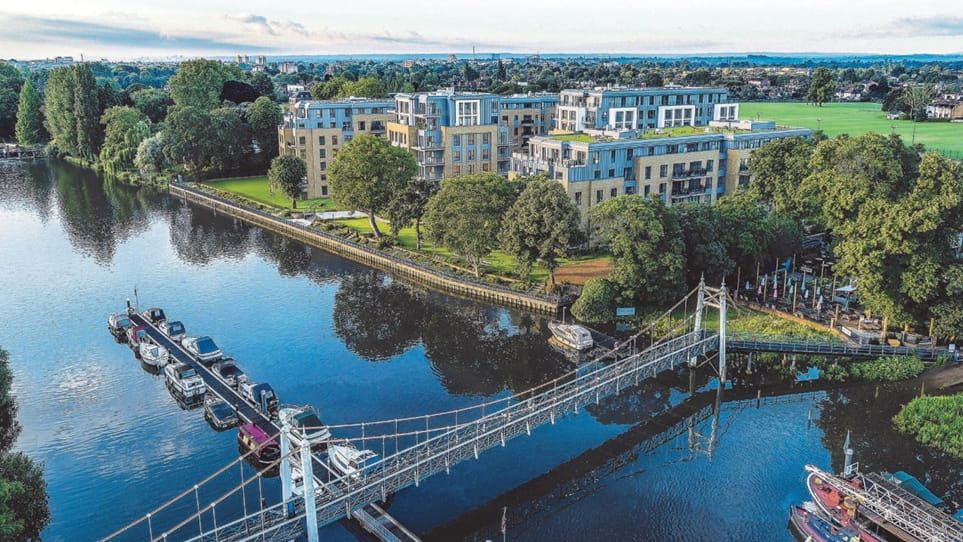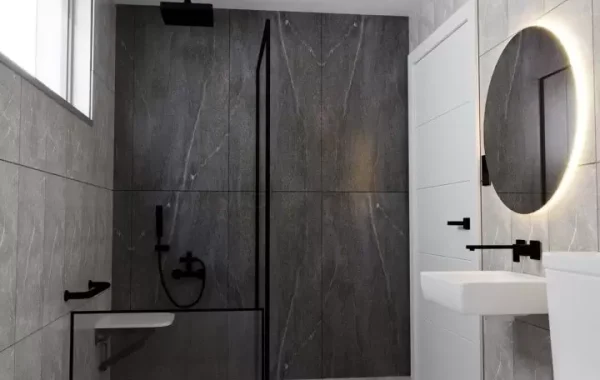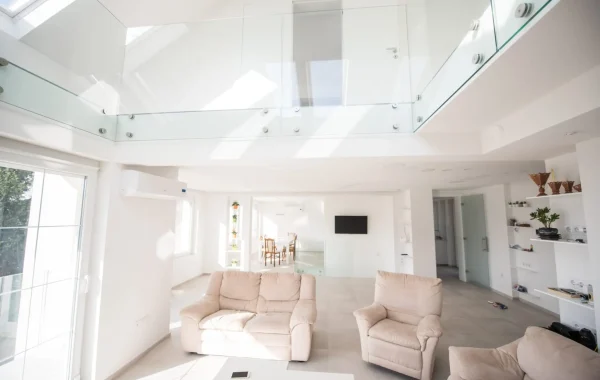Richmond South Teddington Structural Calculations: Crafting Safe and Sustainable Designs for the Future
Richmond South Teddington, a desirable and picturesque area in southwest London, is known for its blend of leafy green spaces, charming Victorian terraces, and modern architectural developments. As this neighborhood evolves, with a mix of contemporary housing and the preservation of historic properties, the importance of solid and precise structural calculations in construction becomes paramount. Whether you’re building a new home, adding an extension, or renovating a period property, structural calculations are not just a technical formality—they are the backbone of any project, ensuring safety, longevity, and harmony with the surrounding environment.
In this article, we will explore the critical role of structural calculations in Richmond South Teddington’s construction projects, diving into how these calculations underpin everything from residential loft conversions to the restoration of century-old buildings. Through a unique lens, we’ll also examine the evolving nature of building regulations, the benefits of skilled structural engineering, and how they blend with the area’s character.
What Exactly Are Structural Calculations and Why Do They Matter?
At the heart of every well-designed building is a set of structural calculations—the precise, scientifically-driven math and analysis that ensure a structure can withstand the forces it will face over its lifetime. These calculations involve understanding how materials behave under various loads, such as weight, wind, seismic forces, and even the effects of climate change over decades. They ensure that a building can stand the test of time while safeguarding its occupants.
In Richmond South Teddington, structural calculations have a profound impact due to the diversity of building styles—from the grand Georgian homes near the River Thames to sleek modern apartments nestled in the heart of the district. Each of these projects requires a tailored approach to structural design that factors in not only the immediate loads of the building but also its interaction with the surrounding environment.
Why Structural Calculations Are Essential:
Safety Assurance: The primary goal of structural calculations is to safeguard the people who use the building. Whether it’s a residential home, a local café, or an office building, every structure must be designed to resist risks such as excessive weight or external forces like high winds or storms. Without proper calculations, buildings are at risk of failing or causing harm.
Compliance with Local and National Regulations: In the UK, construction projects must adhere to rigorous Building Regulations. In Richmond South Teddington, these regulations can be especially complex due to the area’s mixture of modern and historic buildings, making structural calculations essential for achieving compliance.
Sustainability and Durability: Buildings that are designed with careful structural calculations are not only safe but more sustainable, minimizing waste and using materials in a way that reduces environmental impact. This is especially significant in an area like Richmond South Teddington, where preserving green spaces and sustainability is a priority.
Property Value and Investment: Whether you’re designing a family home or a commercial property, ensuring structural integrity through accurate calculations is crucial for maintaining and increasing property value. Buyers are more likely to invest in properties that meet stringent structural and safety standards.
The Elements Behind Structural Calculations
Structural engineers approach each project with a deep understanding of the forces and loads that will act on the building throughout its life cycle. These forces can include:
Dead Loads: These are the permanent, unchanging loads that remain constant throughout the building’s life. These loads include the weight of the building materials (e.g., walls, floors, roofs) and the structure itself.
Live Loads: These are the transient loads that vary over time. They include people, furniture, equipment, and movable objects within the building.
Wind and Seismic Loads: These forces arise from external factors such as high winds, storms, and potential seismic events. While Richmond South Teddington is not a high-risk seismic zone, wind loads and the effects of climate change (stronger storms and heavier rainfall) are important considerations.
Environmental Loads: The shifting conditions of weather, moisture, and temperature can all impact a building’s structural integrity over time. Engineers must consider long-term performance factors such as thermal expansion or contraction, corrosion, and potential water damage.
Foundation and Soil Analysis: Richmond South Teddington, like many urban areas, has a mix of soil conditions—ranging from stable clay to more challenging silty soils. Understanding these local conditions is critical for determining the correct foundation type, whether it’s a shallow foundation or deeper piles.
Structural Calculations for Different Types of Projects in Richmond South Teddington
In an area with such diverse property types and projects, structural calculations are never one-size-fits-all. From period homes to contemporary developments, every project demands a unique approach to its structural needs.
Residential New Builds and Extensions
For new homes or extensions in Richmond South Teddington, structural calculations begin with the foundation design. The soil and the weight of the building dictate whether a traditional slab foundation will suffice or whether reinforced concrete piers or deep piles are required for support. The complexity of the design may increase if the building is located near the Thames or on a sloping site, where ground stability becomes a critical concern.
Loft Conversions: In Richmond South Teddington, many Victorian and Edwardian homes have ample roof space, ideal for loft conversions. These projects require careful structural calculations to ensure the existing roof structure can carry the additional weight of the converted living space without compromising stability. It’s essential to consider the load distribution, the potential need for additional support beams, and the installation of dormer windows or skylights, which could alter the roof’s load dynamics.
Extensions: Whether it’s a rear extension to create more living space or a side extension to improve the flow of the home, the key calculation here is ensuring that the new build integrates seamlessly with the existing structure. Structural engineers assess whether the walls can handle the additional load, whether new beams or steel supports are required, and whether the foundation needs to be extended to accommodate the new space.
Commercial Developments
For larger-scale commercial developments in South Teddington, such as office blocks, retail stores, or even mixed-use buildings, structural calculations play an even more significant role. These projects often require more advanced planning for load-bearing capacity, foundation design, and the integration of new technologies like green roofs or solar panels. The safety and stability of large glass facades, for example, requires careful calculation of wind load and impact resistance.
- Multi-Storey Buildings: With Richmond South Teddington’s proximity to Central London, high-rise or multi-storey buildings are becoming more common. Structural calculations for multi-storey developments need to ensure that the building can handle both the weight of the floors above and the dynamic loads from daily use. This includes considering load-bearing walls, structural beams, and the installation of elevators or stairwells.
Historic Restoration Projects
Richmond South Teddington is home to many listed and historic buildings, which bring a unique challenge when it comes to structural calculations. Whether you’re restoring a Georgian townhouse or adapting a Victorian property for modern use, structural calculations ensure that the building is safe and compliant with current building codes while retaining its architectural heritage.
Preservation of Facades: For historic buildings, engineers often work to preserve external facades while updating internal structures. This requires a detailed understanding of how the original construction has performed over the years, as well as careful consideration of how modern techniques can support and reinforce old materials like brick, stone, and timber.
Changing Uses: Many historic buildings in Richmond South Teddington are repurposed for modern needs, such as converting a former church into a community center or a warehouse into luxury apartments. In these cases, structural calculations must adapt the existing structure to accommodate new internal configurations without compromising the building’s integrity.
The Future of Structural Engineering in Richmond South Teddington
As Richmond South Teddington grows and evolves, the future of structural calculations will likely be shaped by several key factors:
Sustainability and Green Design: With increasing awareness of climate change, structural engineers are focusing more on eco-friendly designs that incorporate sustainable materials, energy-efficient systems, and methods to reduce a building’s carbon footprint. In areas like Richmond South Teddington, where green spaces are highly valued, integrating these green principles is essential.
Technological Advancements: Modern technology, such as Building Information Modelling (BIM) and 3D printing, is revolutionizing structural calculations. BIM allows for a highly detailed and dynamic view of a building’s structure, helping engineers to identify potential weaknesses early in the design phase. These innovations will be key in enhancing the accuracy and efficiency of structural calculations in future projects.
Adapting to Changing Environmental Conditions: As climate change brings more extreme weather patterns, engineers in Richmond South Teddington must increasingly factor in unpredictable forces such as flooding, stronger storms, and rising temperatures. These changing conditions will influence the materials and methods used in construction.
Conclusion: A Solid Foundation for a Growing Community
In Richmond South Teddington, structural calculations are far more than a technical necessity—they are a reflection of the area’s commitment to safety, sustainability, and respect for both its historical roots and modern growth. From residential homes to commercial properties and heritage restorations, every structure in this charming and dynamic borough requires careful attention to detail and expert engineering to ensure it stands the test of time.
By understanding the role of structural calculations in construction and choosing experienced professionals, property owners and developers in Richmond South Teddington can create buildings that are not only structurally sound but also harmonious with their surroundings, helping to shape the neighborhood for generations to come.





